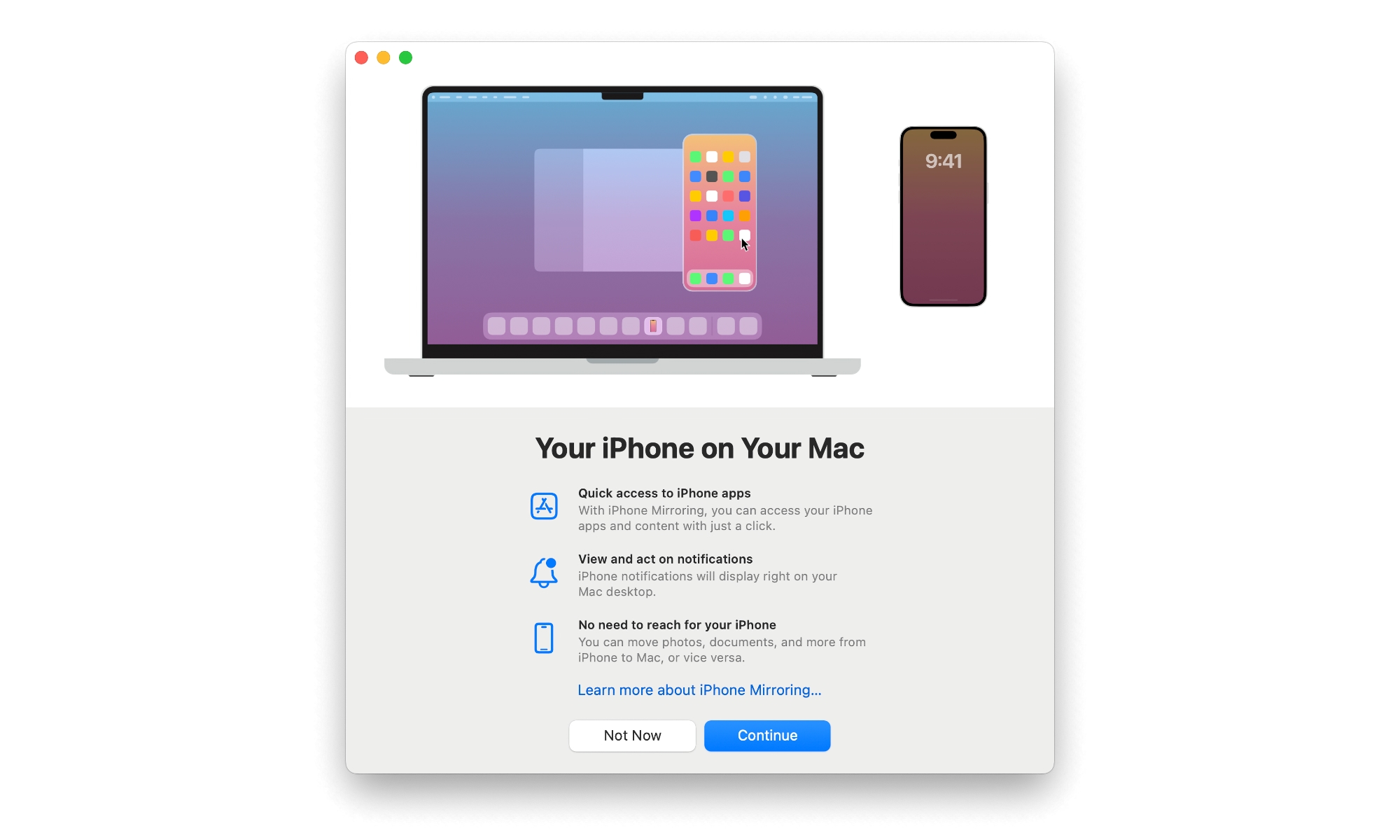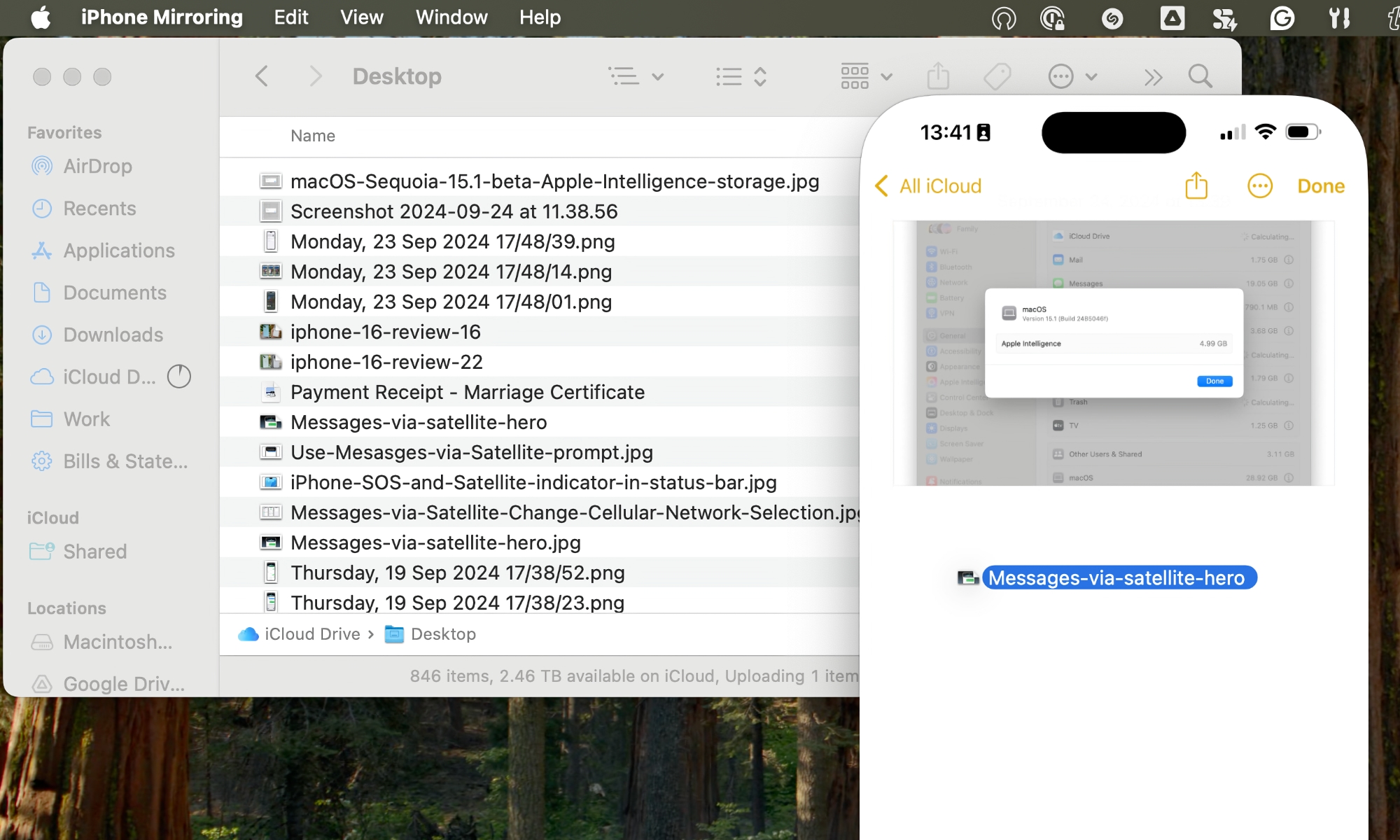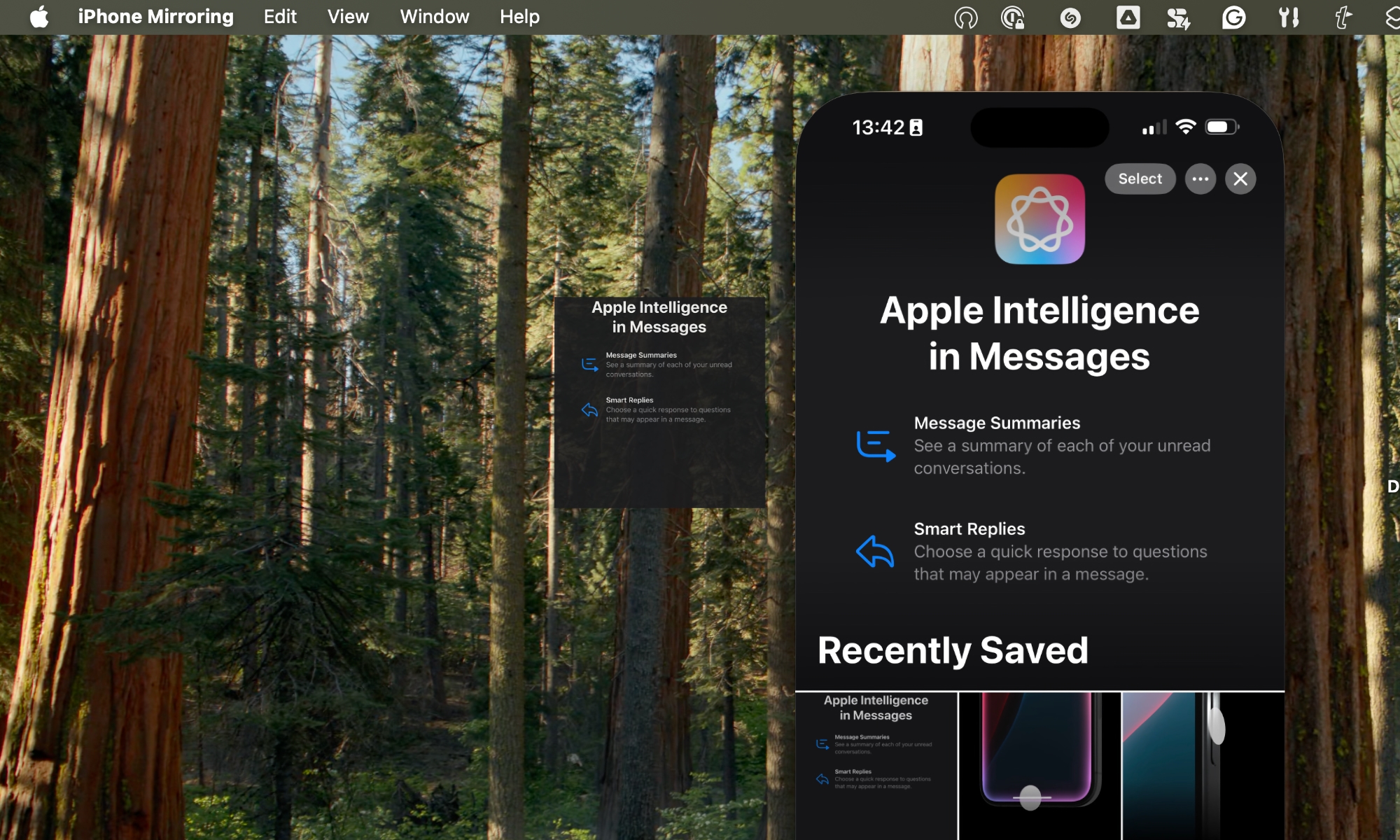iPhone Mirroring Gets Drag and Drop in Latest iOS 18.1 and macOS 15.1 Betas

Toggle Dark Mode
Yesterday’s fifth developer beta of iOS 18.1 had another treat tucked inside for those also running the corresponding macOS Sequoia 15.1 betas: iPhone Mirroring now expands to its full potential.
When Apple showed off iPhone Mirroring at its June Worldwide Developers Conference (WWDC), one promised feature was the ability to drag and drop objects, such as photos and files, between the mirrored iPhone and the Mac. However, when the feature arrived in iOS 18.0 and macOS 15.0 earlier this month, that feature was conspicuously missing. Instead, Apple had updated its iOS and macOS preview pages to note that drag-and-drop was coming “later this year.”
iPhone Mirroring was still a great feature that did nearly everything else you could imagine, including copying and pasting text between devices and letting you receive your iPhone notifications on your Mac. Drag-and-drop was the one omission; thankfully, it looks like “later this year” is coming sooner than we had dared to hope.
As with iPhone Mirroring itself, you’ll need to have the latest iOS 18.1 and macOS 15.1 betas installed on both your iPhone and your Mac. The good news is that Apple has released both in its public beta program today, making them available for anyone who wants to dive in, not only those registered for developer accounts.
Further, iOS 18.1 is now available for all iPhone models, not just those that support Apple Intelligence. However, the macOS 15.1 betas remain limited to Apple Silicon Macs only, despite iPhone Mirroring being supported on Intel Macs with a T2 chip.
How It Works
To recap, iPhone Mirroring lets you connect to your iPhone from your Mac without needing to take it out of your bag or pocket. It still needs to be nearby with Bluetooth and Wi-Fi turned on, as it’s a point-to-point connection between the two devices and not something that runs over your Wi-Fi network, much less the internet. The Mac and iPhone must also both be signed in with the same Apple ID and have two-factor authentication enabled.
Apple notes that it also won’t work if you’re using AirPlay or Sidecar since these use the same communication channels as iPhone Mirroring. While most of the iPhone’s features can be accessed from the Mac, things like the camera and the microphone aren’t supported.
The initial implementation of iPhone Mirroring lets you connect to your iPhone from your Mac and do nearly anything with it as if you’re holding it in your hand. Notifications from your iPhone can also appear on your Mac desktop, just like those from Mac apps, and will open the iPhone Mirroring app on your Mac, connect to your iPhone, and open the corresponding app.
Now, iOS 18.1 and macOS 15.1 fill in the last missing piece, letting you drag and drop items between your mirrored iPhone and your Mac as easily as with any other app on your Mac.
For example, you can drag an image or file directly into a note in Apple’s Notes app, and it will appear there as if you added it directly on the iPhone. The same applies to other apps that support drag-and-drop on the iPhone.
It also works in the other direction, letting you drag an image from the Photos app or a file from the Files app into a folder in Finder or another app on your Mac. Similarly, objects and files can also be dragged over to the Mac from any other iPhone app that supports drag-and-drop directly on the iPhone.
Apple hasn’t provided a specific timeframe for iOS 18.1 and macOS Sequoia 15.1 to be released to the public other than promising that Apple Intelligence will be available for the iPhone 16 next month. However, the increasing frequency of developer and public beta releases suggests we’re moving into the short strokes, meaning a public release could land in early October.










